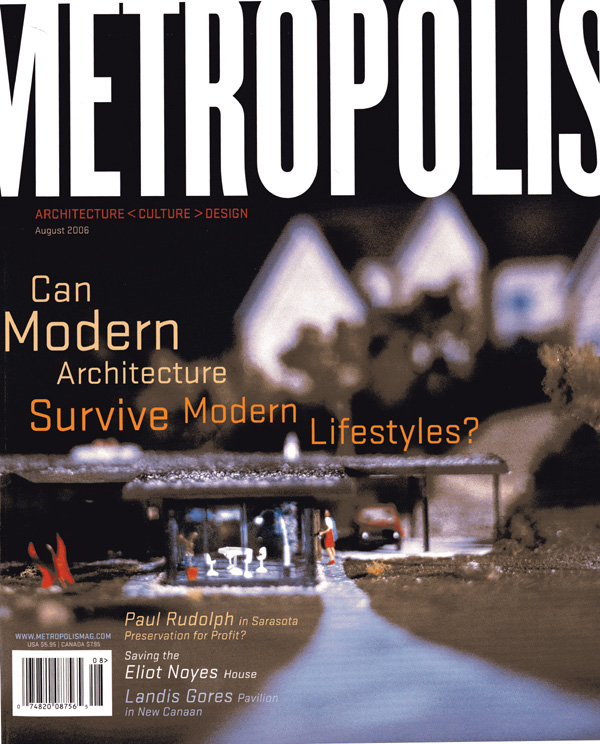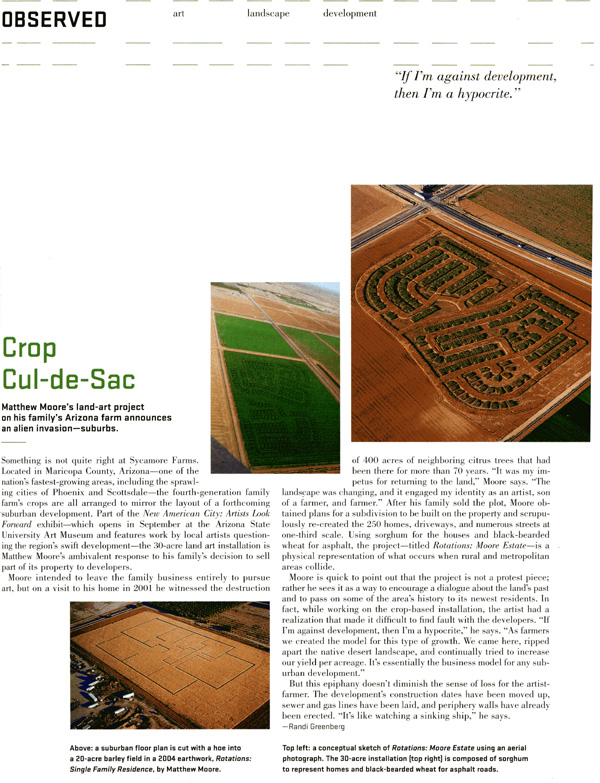Metropolis | 2006
Metropolis Magazine: “Crop Cul-de-Sac”
By Randi Greenberg
Something is not quite right at Sycamore Farms. Located in Maricopa County, Arizona—one of the nation’s fastest-growing areas, including the sprawling cities of Phoenix and Scottsdale—the fourth-generation family farm’s crops are all arranged to mirror the layout of a forthcoming suburban development. Part of the New American City: Artists Look Forward exhibit—which opens in September at the Arizona State University Art Museum and features work by local artists questioning the region’s swift development—the 30-acre land art installation is Matthew Moore’s ambivalent response to his family’s decision to sell part of its property to developers.
Moore intended to leave the family business entirely to pursue art, but on a visit to his home in 2001 he witnessed the destruction of 400 acres of neighboring citrus trees that had been there for more than 70 years. “It was my impetus for returning to the land,” Moore says. “The landscape was changing, and it engaged my identity as an artist, son of a farmer, and farmer.” After his family sold the plot, Moore obtained plans for a subdivision to be built on the property and scrupulously re-created the 250 homes, driveways, and numerous streets at one-third scale. Using sorghum for the houses and black-bearded wheat for asphalt, the project—titled Rotations: Moore Estate—is a physical representation of what occurs when rural and metropolitan areas collide.
Moore is quick to point out that the project is not a protest piece; rather he sees it as a way to encourage a dialogue about the land’s past and to pass on some of the area’s history to its newest residents. In fact, while working on the crop-based installation, the artist had a realization that made it difficult to find fault with the developers. “If I’m against development, then I’m a hypocrite,” he says. “As farmers we created the model for this type of growth. We came here, ripped apart the native desert landscape, and continually tried to increase our yield per acreage. It’s essentially the business model for any suburban development.”
But this epiphany doesn’t diminish the sense of loss for the artist-farmer. The development’s construction dates have been moved up, sewer and gas lines have been laid, and periphery walls have already been erected. “It’s like watching a sinking ship,” he says.




